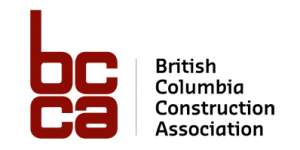Construction File:
Should They Be Used and How to Use Them Effectively
An ‘alternative’ is defined as anything (e.g. a product, an installation, a design, a requirement, a scope of work, etc.) that is separately priced by bidders so as to provide options to the Owner in determining what the work of the contract will actually be. An ‘alternative price’ is defined as the amount stipulated by the bidder for an alternative and can be stated as an addition, a deduction, or no change to the base bid price. The above definition for ‘alternative prices’ is broad enough to also encompass what have in the past been defined as ‘separate prices’. Distinguishing between alternative prices and separate prices provides little, if any, benefit and contributes an unnecessary level of complexity to the bidding process. Use of the term ‘separate price(s)’ is therefore no longer recommended. It can be considered synonymous with ‘alternative price(s)’. The term ‘alternate’ (which appears in Master Format) can also be considered synonymous with ‘alternative’.
Notwithstanding the perceived need to use alternative prices there should be some limitation on their use. Where the scope of work is clearly defined and sufficient budget flexibility exists to provide for bid price variations, it is recommended that alternative prices not be used, these being the majority of construction contracts. The use of alternative prices should only be used to meet target budgets and should be restricted to no more than 10% of the tender price in total value. The use of alternative prices as a shopping list is to be discouraged.
The bidding process often boils down to scant minutes, and sometimes seconds, in which to finalize pricing, and to waste that time frame on superfluous number semantics is not in the best interest of owners. Despite a contrary perception that legitimate pricing can only be obtained at bid closing, bidders often cannot provide accurate numbers in the limited time available regardless. Depending on the complexity of pricing, alternative prices are often created before the actual final bid is prepared to avoid the last minute scramble and a possible irregularity; thus a true value is not provided anyway. The owner will get the best value at the end of the day from a simple bid call.
Where it is necessary to use alternative prices that potentially involve multiple trades and that are part of the tender the following principles should be adopted: A bidding process which allows adequate time prior to the submissions of bids, for the general contractor to estimate a price for the scope of work included in the alternative prices, must be provided. For this purpose the use of the British Columbia Construction Association Bid Depository system is recommended.
There are two procedures for obtaining alternative prices. The first method is where the alternative prices affect the base price and are considered in determining the low bid. In this case the low bidder is chosen by combining the base bid plus or minus the alternative prices that are either accepted or rejected. This also means the low bidder may be determined by which combination of alternatives is accepted, which can lead to allegations by the bidders of manipulation by an owner. The second method used is where the low bidder is chosen on the base bid and the alternative prices do not affect the selection procedure. This method is the most desirable and most transparent. The tender documents should clearly indicate which of the above two procedures is to be followed.
Alternative prices complicate the preparation and evaluation of the bid; therefore, they should be avoided. If these prices are required, the bid document should specify that the prices be provided within 48 hours after bid closing by the lowest bidder only.
The Construction File is a publication of the BC Construction Association.
For additional information contact the BCCA.


